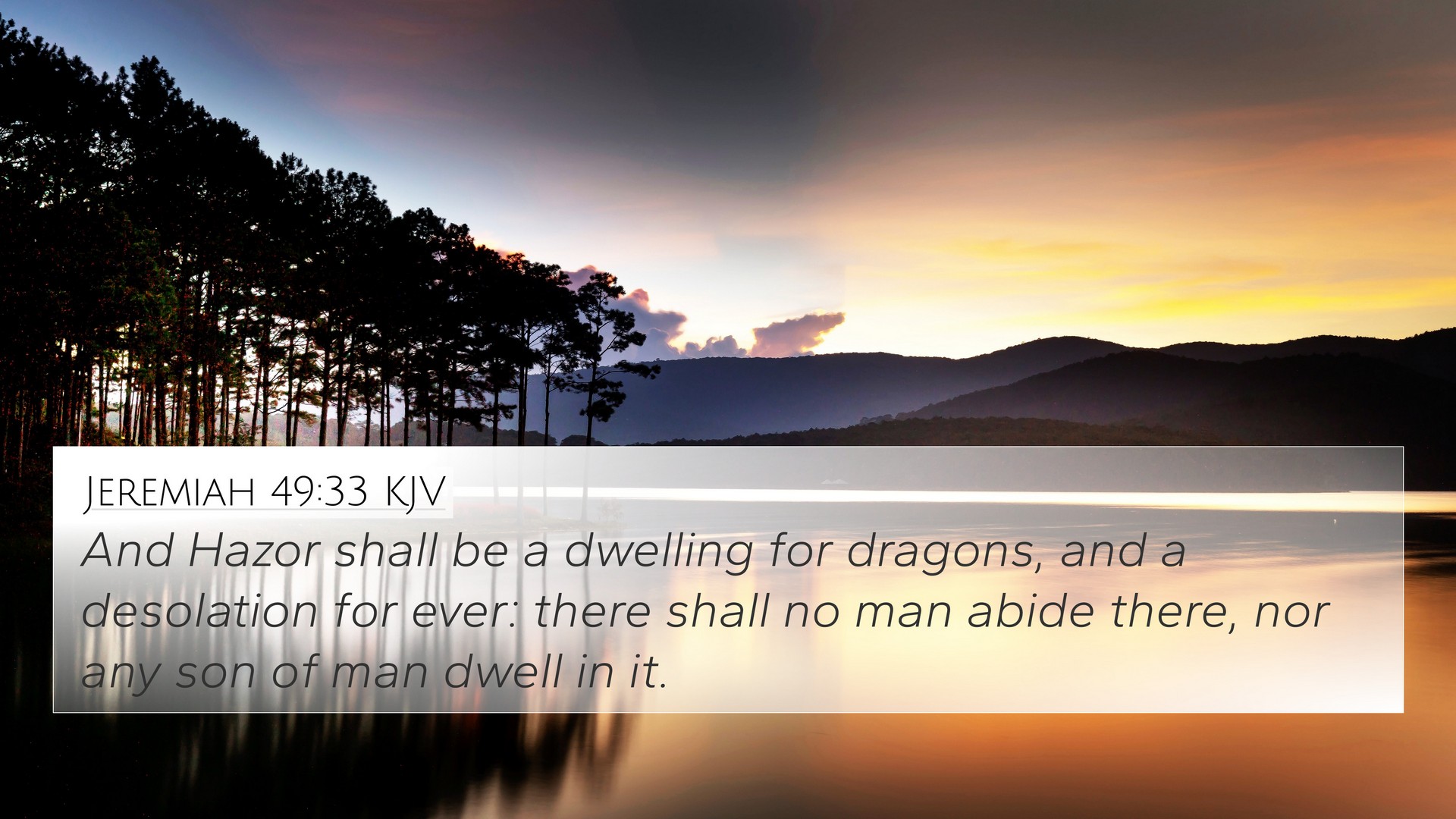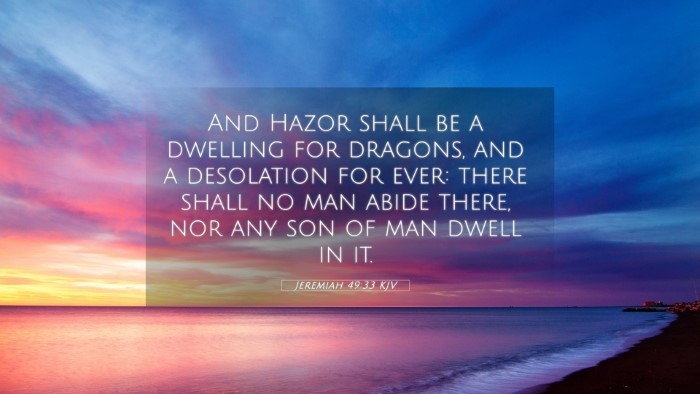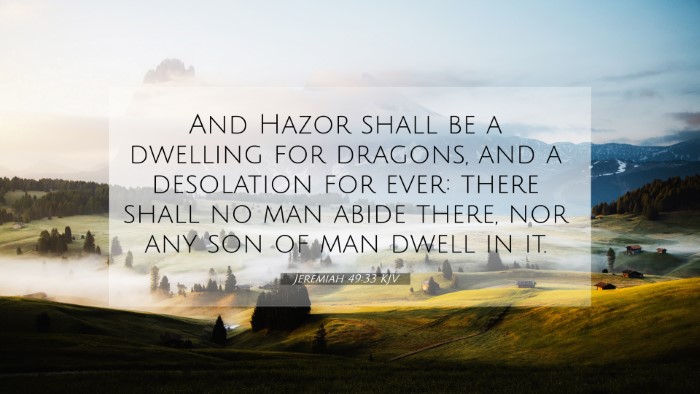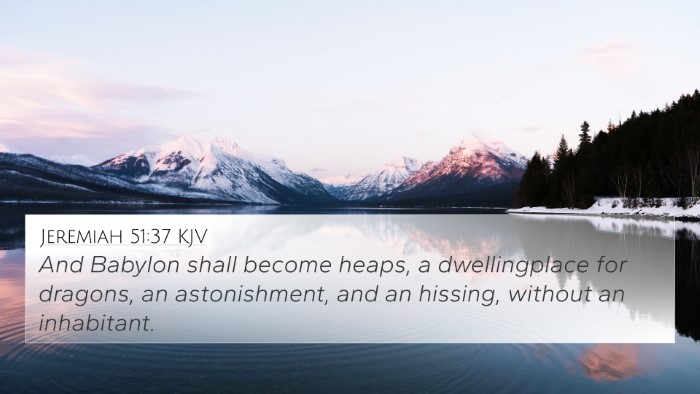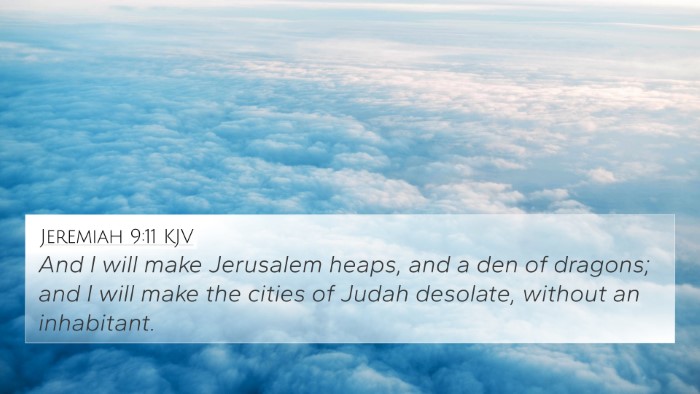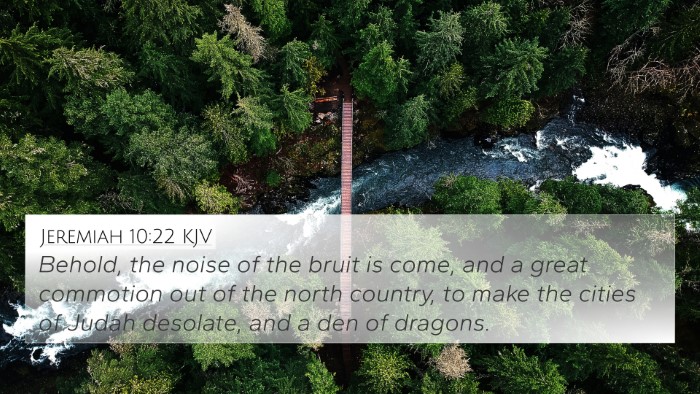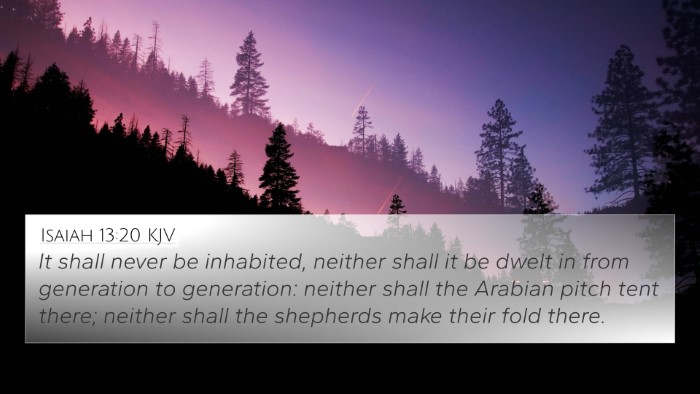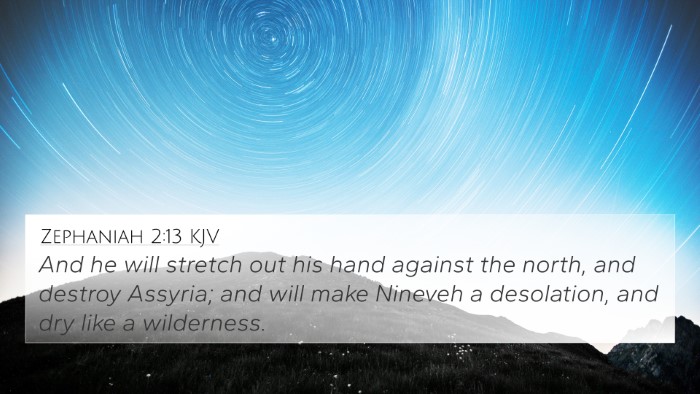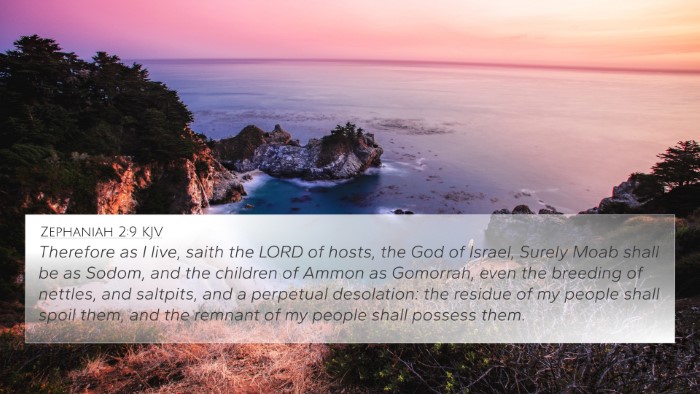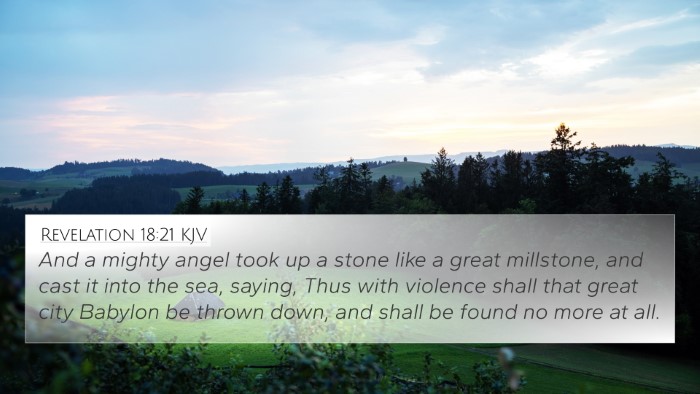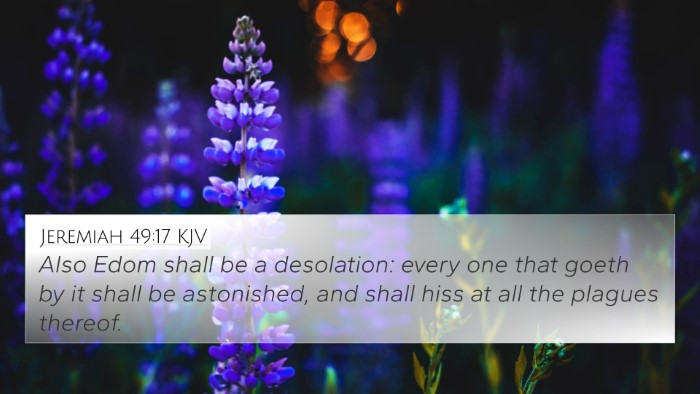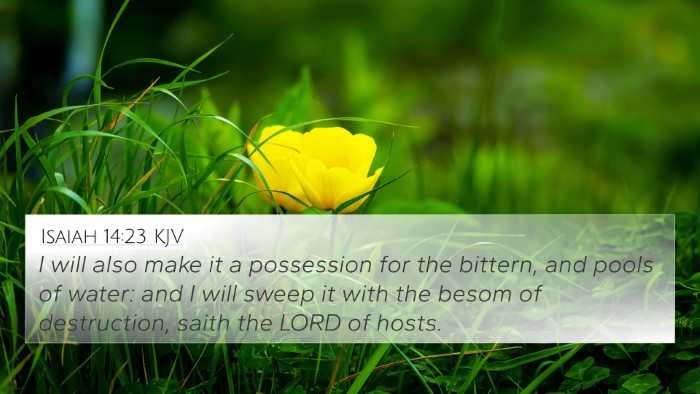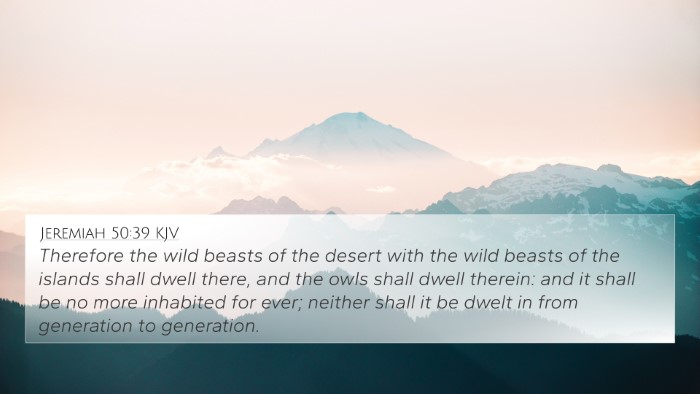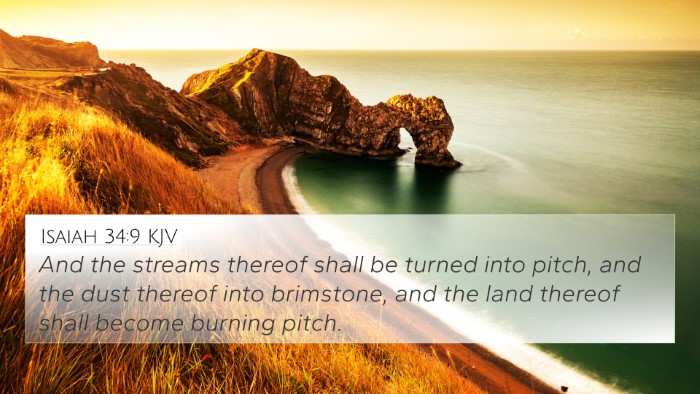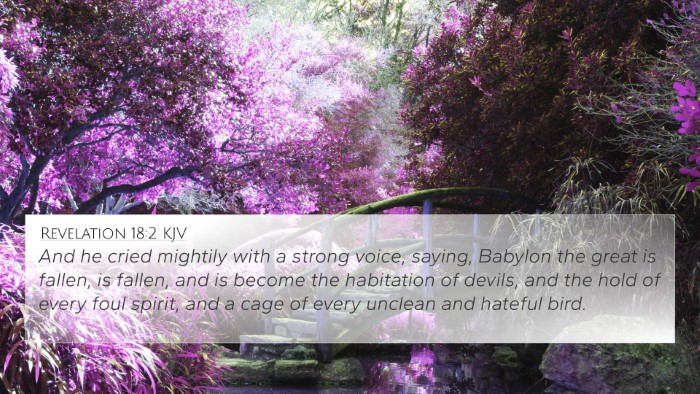Understanding Jeremiah 49:33
Jeremiah 49:33 states:
"And Hazor shall be a dwelling for dragons, and a desolation for ever: there shall no man abide there, nor any son of man dwell in it."
This verse, rich in symbolism and prophetic significance, speaks about the fate of Hazor, a city that once stood proud but would become a desolate place, inhabited only by creatures rather than people.
Key Themes and Interpretations
The commentaries provide a range of insights into this passage, focusing on themes of judgment, desolation, and the consequences of sin.
- Divine Judgment: Matthew Henry notes that the prophecy is a declaration of God's judgment against cities and nations that stand against Him. Hazor represents those that rebel and thus face desolation.
- Symbolism of Dragons: According to Albert Barnes, the mention of dragons signifies utter desolation and abandonment, indicating that Hazor will be a wilderness bereft of human life.
- Historical Context: Adam Clarke emphasizes understanding the historical context, as Hazor was an important city in its time. Its future desolation serves as a warning of the consequences of turning away from God's covenant.
- Prophetic Imagery: The imagery used in the verse reflects God’s ability to reduce the mightiest cities to ruins, which resonates through many passages in the Bible.
Cross-Referencing Biblical Texts
Jeremiah 49:33 connects with various other scriptural passages, shedding light on the broader themes of judgment and divine fulfillment. Below are some significant cross-references:
- Isaiah 34:13-15: References to desolation and wild beasts inhabiting forsaken cities.
- Zephaniah 2:14: Describes the fate of cities that are abandoned and serve as shelters for wild animals.
- Micah 1:6: Prophecy about turning Samaria into a heap of ruins, highlighting God's judgment on cities.
- Ezekiel 29:10-11: Explains the desolation of Egypt, which serves as a parallel to the fate of Hazor.
- Jeremiah 50:39: Similarly, speaks of desolation and the abode of animals, reinforcing the theme of judgment.
- Revelation 18:2: Prophetic destruction of Babylon likens to that which Hazor will experience.
- Luke 13:34: Jesus laments over Jerusalem, speaking of its inevitable desolation if unrepentant.
- Psalm 102:6: Portrays similar imagery of being like a pelican in the wilderness, a metaphor for desolation.
- Habakkuk 1:6: Discusses how God raises nations to execute judgement, reflecting what occurs in Jeremiah.
- Isaiah 14:23: The prophecy against Babylon includes themes of desolation similar to what Hazor faces.
Thematic Connections
Understanding the thematic connections inherent in Jeremiah 49:33 can enhance the grasp of God's judgement across different scriptural narratives.
These verses underline the limits of human power and authority when opposed to divine will, providing a backdrop for moral reflection regarding the consequences of sin.
Conclusion
The desolation of Hazor serves as a powerful reminder of God's sovereignty and the ultimate reality of divine judgment. By exploring Jeremiah 49:33 through public domain commentaries, we gain a multifaceted understanding that resonates through numerous Biblical texts. This exploration serves as a crucial tool in our Bible study and theological reflection.
Further Study on Cross-Referencing
For those interested in tools for cross-referencing in the Bible, consider incorporating:
- Bible concordances
- Bible cross-reference guides
- Methods for cross-referencing Bible study
- Comprehensive Bible reference resources
- Detailed studies on themes connecting the Old and New Testament
